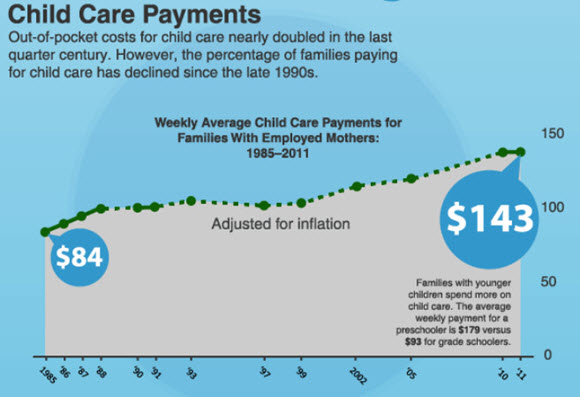How Do We Know About Child Care in the U.S.?
How Do We Know About Child Care in the U.S.?
The increase in maternal employment and desire for educational opportunities for young children has increased the need and demand for child care. An infographic released today by the U.S. Census Bureau illustrates and provides an overview of child care statistics.
The Census Bureau’s report series, Who’s Minding the Kids?, describes the number and characteristics of children in different child care arrangements and sheds light on how families balance work and family needs. Statistics like these, help policy makers in both the private sector and the public answer the question, “How do we know?”
These important statistics on how America cares for its children are collected through the Survey of Income and Program Participation (SIPP). SIPP measures who cares for the child while the parents or guardian are at work, school, or elsewhere. For example, in 2011, three out of five children under age 5 were in some type of regular child care arrangement.
The Census Bureau’s data on child care also provides a full picture of the child care market and distinguishes between the use of relative and nonrelative care among working and nonworking families.
These statistics are used by policymakers to understand basic child care usage patterns by working and nonworking families and the cost of child care for low-income families. Additionally, a number of researchers use Census Bureau child care statistics to understand what types of child care arrangements are used by families as the proportion of mothers with young children in the labor force remains high.
The Census Bureau gathers information on the various types of child care families use for children between the ages of 0 to 14. In 2011, 42 percent of children under age 5 were cared for by a relative, while 33 percent were cared for by a nonrelative. Care providers can be broadly classified as relatives or nonrelatives of children.
Another kind of nonrelative care is family day care providers, who care for two or more children outside of the child’s home. Organized child care facilities include day care or child care centers, nursery schools, preschools, and Head Start programs. For older children, data are also collected on school enrollment, enrichment activities, and time spent in self-care situations.
SIPP also collects information on the number of hours spent in care, child care payments, and receipt of assistance to pay for child care. Our statistics show that the average cash payment for child care for families with an employed mother increased from $84 per week in 1985 to $143 per week in 2011 (in constant 2011 dollars).
View full infographic:




